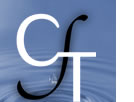 |
||||||||||
The Capture
The word "capture" implies the idea of grasping or taking hold of something. It suggests an active mind rather than a passive one - a conscious organizing of what you read in order to make sense out of it, to create a framework or structure for remembering and using it.
The capture consists of four deliberate observations:
• Purpose (Why?)
Why has the author tried to communicate? To share an insight? To convince? To criticize? To entertain? Specifically why is he or she making the effort to say something, in that way, and that that time, to his/her audience?
• Central Message (What?)
What exactly is the point, the essence, the main idea? Find it and force yourself to make it into a clear complete statement; e.g., "Her central argument is that . . . ."
• Validation / Application (How?)
How has the author supported his or her central message (validation), or how can that idea be used (application)? Find the supporting evidence - ideas, facts, images, etc.--that the author uses to convince you. If you identify the pattern of support, you will have outlined the piece of writing.
• Values / Assumptions (Where?)
Where does the author stand? What does he or she believe in or value? What is assumed or taken for granted in this piece of writing? Who is the assumed audience of this piece? As a reader, work to pay attention to and discover the values, beliefs, biases, assumptions (sometimes overt, sometimes subtle) underlying what you read.
Please record your capture on 1-2 pages, maximum. Use whatever format is most helpful to you for grasping the text's essence: an outline, paragraphs, a flow-chart or concept map, etc. Be prepared to share your findings in class.
By Allison Pingree, Vanderbilt University Center for Teaching, adapted from Professor Walter Gong, San Jose State University.
HOME | ABOUT CFT | PROGRAMS | SERVICES | RESOURCES
Center for Teaching |
General Questions? Web Site Questions? Copyright ©2009 |
